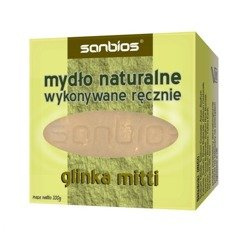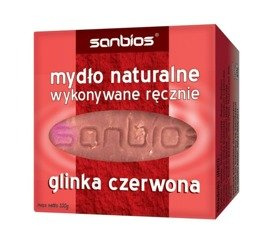Easy product returns
You can return the product without providing a reason within 14 days.


The use of chemicals and cosmetics preservatives stuffed in a few months can leave permanent marks on our face - gray, damaged skin, with a tendency to blackheads and pimples. For several years, a surprising phenomenon can be observed on the faces of Polish women - even the owners of mixed and oily skin complain about the effect of "tightened" skin and flaky, burning zones on the face - eg on the cheeks and around the lips. This problem is the result of the use of inappropriate cosmetics for skin care, and after many years of such treatments you have to intensively deal with the regeneration of damaged skin, which will help her to return to harmony. The way to normalize the complexion is to take care of traditional, natural cosmetics, full of vitamins and minerals.
What is this?
Porcelain Clay, otherwise known as kaolin, is a light, powdery powder.
White clay is the effect of natural transformations, which are affected by igneous rocks, therefore the raw material is extremely rich in microelements - calcium, magnesium, zinc, copper and phosphorus.
Kaolin has a unique ability to absorb toxins and impurities; detoxifies and eliminates bacteria - thanks to this skin is visibly smoothed and cleaned after the first use. White clay is the most delicate of clays, therefore it is recommended in the care of dry, delicate skin and with the first signs of aging - kaolin gently smoothes and brightens the skin.
Composition and Properties:
Kaolin - white clay
Porcelain clay is rich in minerals and microelements that have strong antibacterial, anti-inflammatory, smoothing and soothing properties. A very gentle exfoliating action helps to get rid of the dead layer of the epidermis, thanks to which it is possible to get rid of toxins from the body faster, and the skin is ready to more actively absorb the vitamins and minerals present in cosmetics. Kaolin supports the regeneration of damaged skin and accelerates the healing of microdamages, caused by external factors - such as frost, wind, heating or sunrays.
How to use?
A small amount of white clay should be mixed with lukewarm water and applied to the face and cleavage. You can add a few drops of natural oils, eg almond, Inca Inchi or coconut to the mask - the skin will be additionally moisturized. The mask should be left on the face until it is completely dry, but not shorter than 10-15 minutes; in case the clay should dry before this time, lightly moisten the clay on the face with a damp cloth or sponge. The mask should be gently washed from the face with lukewarm water, and with a combination of oily and combination skin, a gentle peeling massage can be performed. Clay is also perfectly suitable for use on the skin of the body, especially on areas affected by skin problems - acne or pimples.
Interesting facts:
You can use water or a hydrolate to make the perfect clay mask. Hydrolat is a substance obtained as a result of distillation of plants using water vapor - therefore it has valuable minerals and vitamins. The hydrolate contains valuable, full of active nutrients water and trace amounts of essential oil, and on its basis you can create intensely moisturizing natural cosmetics. Hydrolat is a perfect addition to a clay mask - it gently exfoliates dead skin cells, nourishes and visibly rejuvenates the skin.




